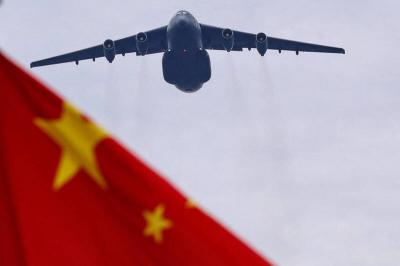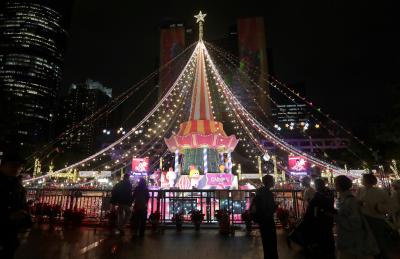Researchers at Academia Sinica’s Institute of Molecular Biology have found that defects in particular neuronal circuits can induce autistic characteristics, a breakthrough discovery toward a potential clinical treatment for the disorder, which has also been proposed by the study.
Autism is a disorder becoming increasingly prevalent in highly developed countries, with its incidence estimated in 2012 to be one in 88 children in the US, and boys are five times more likely than girls to be diagnosed with an autism spectrum disorder (ASD).
ASDs are now known to be caused by early abnormal neural development, and while clinical studies have found an association with neural circuit formation, the molecular mechanism at work remained unclear, the team said.
Recent genome sequencing studies of ASDs have identified hundreds of mutated genes in people with the disorder, and the knowledge could be the first step in unveiling the pathogenesis of ASDs.
However, how disruptive mutations of genes lead to abnormal neural development, and thereby autism, is an unanswered question.
After nine years of research, lead author of study, Hsueh Yi-ping (薛一蘋), and her team found that insufficiency of the Tbr1 gene — one of the six most targeted genes with recurrent mutations identified in people with autism — results in defective axonal projections of amygdala neurons in mice, which acted differently from their wild-type counterparts in social interaction.
Hsueh said that mice with deficient Tbr1 were found to be missing “the posterior part of the anterior commissure” in their brains, which is the part responsible for connecting the two amygdalae in the two hemispheres of the brain.
“Not only was the connection between the two amygdalae impaired, the intra-amygdalar connections were also reduced,” Hsueh said.
The amygdala, an almond-shaped set of nuclei, is the region of the brain in charge of social interaction, emotional response, fear and aggression, the research team said.
The study found that mice with insufficient Tbr1 and reduced inter and intra-amygdala connectivity displayed autism-like behavior.
Researchers successfully ameliorated the behaviors by giving those animals D-cycloserine, an antibiotic that was at first used to fight Mycobacterium tuberculosis, but was later found to be helpful for treating a range of psychiatric ailments.
Hsueh said that although the missing posterior part of the anterior commissure cannot be restored, as it is a developmental defect, D-cycloserine could increase the activity of amygdalar neurons and ameliorate the mice’s autism-like behavior.
As D-cycloserine is a medication that is currently already in use clinically, its potential to be used for treatment of ASDs in the near future will be higher, if its related therapeutic effect is verified by further studies,” Hsueh said.
The team’s study has been published in the journal Nature Neuroscience.

Beijing could eventually see a full amphibious invasion of Taiwan as the only "prudent" way to bring about unification, the US Department of Defense said in a newly released annual report to Congress. The Pentagon's "Annual Report to Congress: Military and Security Developments Involving the People's Republic of China 2025," was in many ways similar to last year’s report but reorganized the analysis of the options China has to take over Taiwan. Generally, according to the report, Chinese leaders view the People's Liberation Army's (PLA) capabilities for a Taiwan campaign as improving, but they remain uncertain about its readiness to successfully seize

Taiwan is getting a day off on Christmas for the first time in 25 years. The change comes after opposition parties passed a law earlier this year to add or restore five public holidays, including Constitution Day, which falls on today, Dec. 25. The day marks the 1947 adoption of the constitution of the Republic of China, as the government in Taipei is formally known. Back then the Chinese Nationalist Party (KMT) governed China from Nanjing. When the KMT, now an opposition party in Taiwan, passed the legislation on holidays, it said that they would help “commemorate the history of national development.” That

Taiwan has overtaken South Korea this year in per capita income for the first time in 23 years, IMF data showed. Per capita income is a nation’s GDP divided by the total population, used to compare average wealth levels across countries. Taiwan also beat Japan this year on per capita income, after surpassing it for the first time last year, US magazine Newsweek reported yesterday. Across Asia, Taiwan ranked fourth for per capita income at US$37,827 this year due to sustained economic growth, the report said. In the top three spots were Singapore, Macau and Hong Kong, it said. South

Snow fell on Yushan (Jade Mountain, 玉山) yesterday morning as a continental cold air mass sent temperatures below freezing on Taiwan’s tallest peak, the Central Weather Administration (CWA) said. Snowflakes were seen on Yushan’s north peak from 6:28am to 6:38am, but they did not fully cover the ground and no accumulation was recorded, the CWA said. As of 7:42am, the lowest temperature recorded across Taiwan was minus-5.5°C at Yushan’s Fengkou observatory and minus-4.7°C at the Yushan observatory, CWA data showed. On Hehuanshan (合歡山) in Nantou County, a low of 1.3°C was recorded at 6:39pm, when ice pellets fell at Songsyue Lodge (松雪樓), a